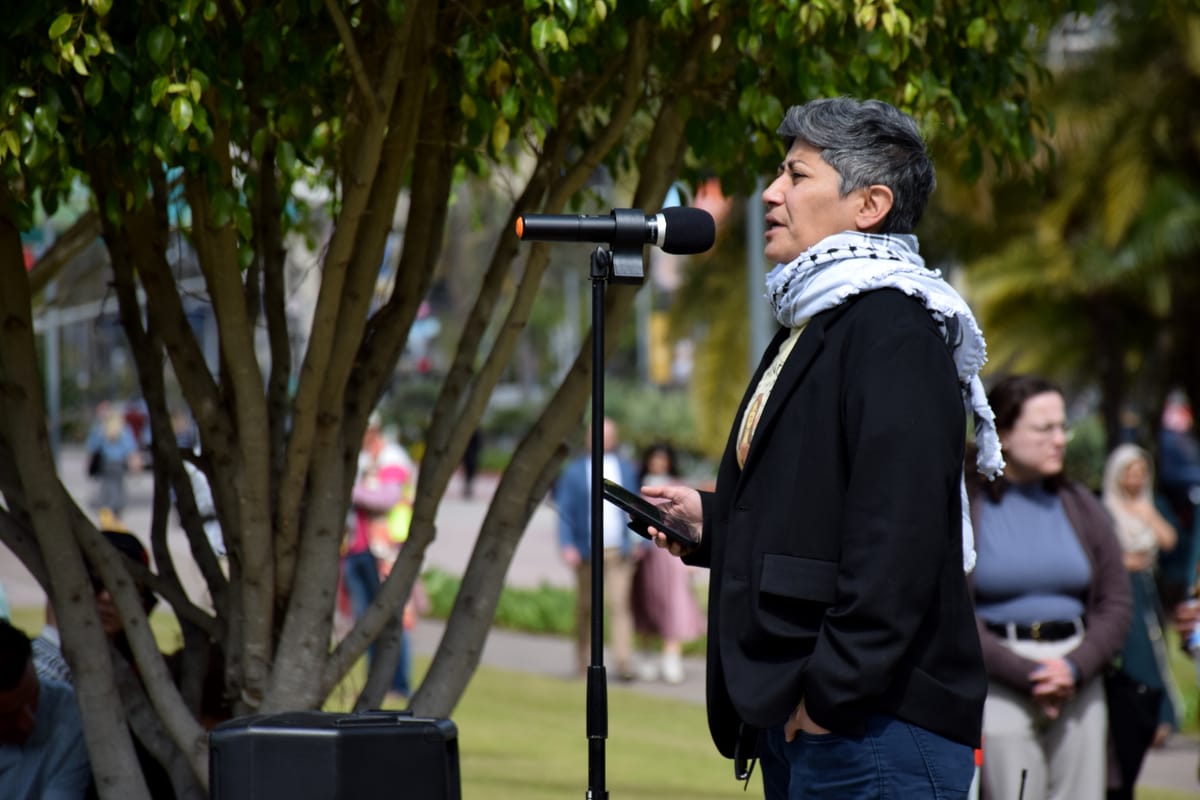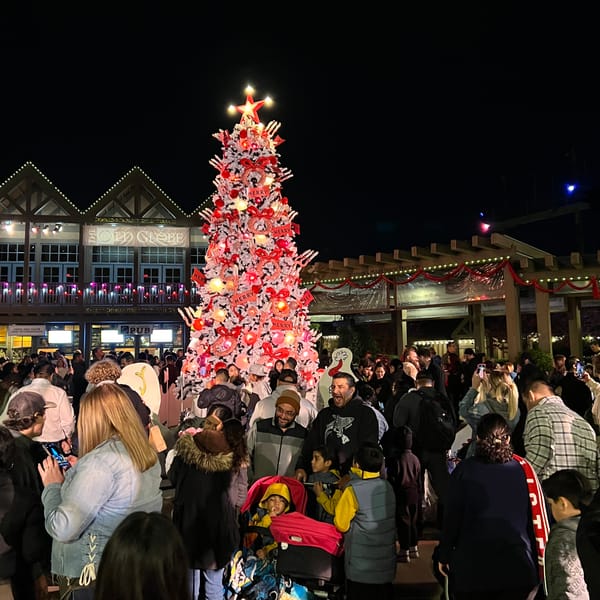How to stay safe as an activist amid digital and physical threats

San Diego organizers share digital and personal security strategies to confront heightened risks under the second Trump administration.
Written by Marco Guajardo, Edited by Lauren J. Mapp
In the last month, demonstrations sprang up across San Diego addressing issues that include Palestinian rights, protections for immigrants and workers, and the ongoing threat of climate change, many of which are in response to President Donald Trump’s policies.
While mass deportations and crackdowns on activists are not unique to the current moment, community organizations like Activist San Diego see the Trump administration’s introduction of laws to criminalize dissent and the use of surveillance technology to target activists as a heightened threat for social justice organizers.
As Trump’s second term approached its 100-day mark, Activist San Diego hosted an April 21 panel on movement security to guide local activists to better protect themselves against what the event flyer refers to as fascist forces. The event was part of its monthly community summits held at the Joyce Beers Community Center.
Activist San Diego board member Frances Yasmeen Motiwalla said the organization picked the topic of security for its urgency and relevance.
“Our government is disappearing people and calling social justice organizers enemies of the state,” Motiwalla said. “It's kind of a sad fact that we live in a moment where we have to pay attention to our security and our footprint.”
The event featured presenters with growing experience on three different focuses of security related to social justice organizing: digital, physical and emotional. During the presentation, participants were encouraged to assess their own threats, risks and vulnerabilities.
For activists, evaluating risk includes assessing the likelihood of an outcome, the extent of the damage if it occurs and whether to move forward, transfer it to third parties or avoid it altogether.
Here’s a guide to protecting your own security, based on information shared by Activist San Diego panelists.
‘Don't trade security for convenience:’ Balancing digital security
Managing digital security means balancing how much personal data you want to hand over to online entities with the extra steps you take to protect your activities.
You can minimize your risk through your phone by rejecting cookies and refraining from downloading programs or apps that you don’t need, like hotel apps used as room keys. Keep in mind that programs that don’t require payment sell your personal data as the product to third parties.
Avoiding single sign-ons to websites and apps through Google, Apple or other platforms keeps your data out of untrustworthy hands. Instead, manage your own accounts using a password manager.
Using a VPN, encryption services and password-protecting as many features on your phone as possible provides an extra barrier to invasion of digital privacy. Use your own hotspot when possible instead of signing into unknown WiFi accounts, which becomes your internet service provider with access to your activity.
Avoid mysterious hyperlinks, QR codes or flash drives, as these can take your devices to viruses or malware.
In the case of physical confiscation by the government, data destruction is not a feasible method as hard drives can likely still be accessed. Hiding your devices is the best approach to avoiding seizure.
Physical security in demonstrations
When attending in-person events, participants should protect themselves from digital tracking by government entities in the field. To do this, you can disable biometrics on your phone — like facial or fingerprint recognition and voice assistance — and turn off all app tracking in your privacy settings.
A burner phone that doesn’t carry all of your daily activity and identity records is another safety option. Ultimately the most secure option to avoid tracking is to leave your phone at home.
Awareness and community planning are the foundations to people’s physical safety.
Rally participants should evaluate their surroundings and stay aware of potential risks. Remain vigilant of people who may change their appearances by altering headwear, face coverings or clothing layers in an attempt to discreetly follow marchers.
If you’re feeling endangered, you can throw off potential threats by using the same method of changing articles of clothing to alter your appearance. Existing surveillance infrastructure can be used to your advantage as a deterrent to risks.
Self defense devices such as pepper spray with a UV tag allow you to identify who your attacker is.
Be aware of clues for potential vehicular attack such as non-existing or out-of-state license plates, politically antagonistic decals and driver irritation. Protesters should always stay to the side of a vehicle.
In an active shooter scenario, attendees should run, hide and turn their phone on silent. Large structures with concrete and steel offer safety to monitor the situation as it unfolds.
Instead of responding to agitators, take a deep breath, ignore them and don’t engage.
Planning with organizers or friends before an event is another effective security step. This can include communicating safety concerns, pre-existing medical conditions and a fallback plan if something goes wrong.
The long game of sustainable activism
Sustainable activism encourages participants to balance personal well-being and activism to maintain long-term involvement with the causes they support.
Organizers can reflect on things they are nurturing and neglecting in their lives to identify priorities. Pay attention to how you are taking care of your daily life while at the same time paying attention to things you want to change in your community.
Learning to say “no” and not getting involved in everything all at once helps activists to maintain sustainable social change. Getting good exercise, sleep and nutrition may also support balancing work as an activist.
Spending time in nature can help you be more mindful, give you perspective and connect you to something bigger than yourself, which can be grounding. Being intentional about forming a community with people who have interests outside of activist spaces allows you to focus on other facets of your life.
Find coaching, mentoring, therapy or some other form of support to get advice. This helps you build emotional resilience and self awareness about your own limitations so you can recognize when you are burning out, feeling nervous or afraid. Writing is another tool you can use to organize your thoughts, be more mindful or find balance.






